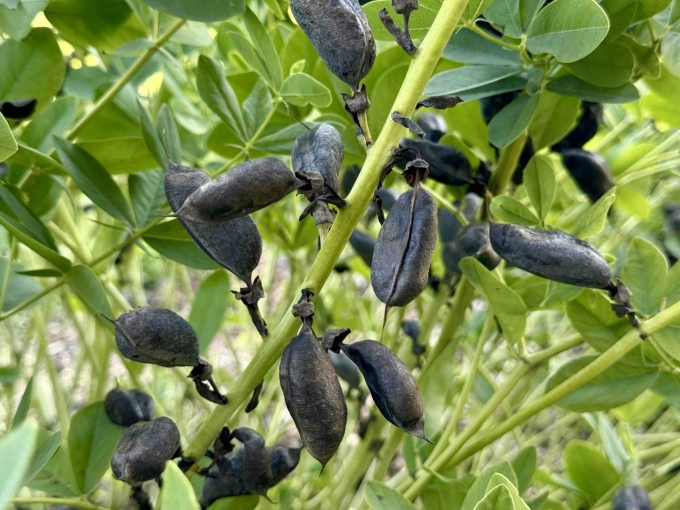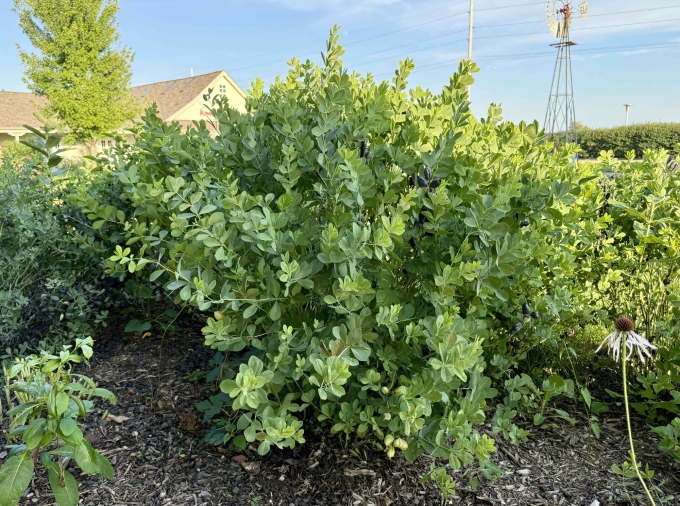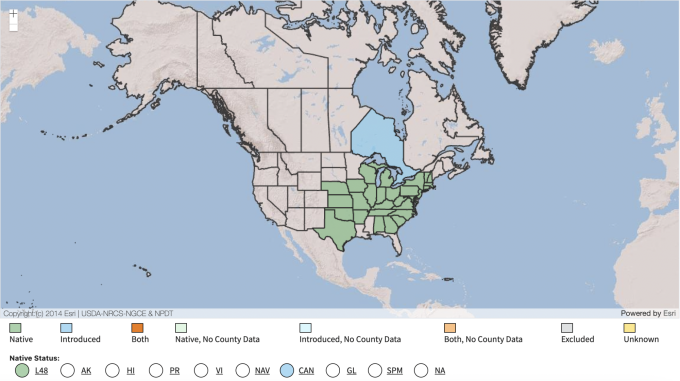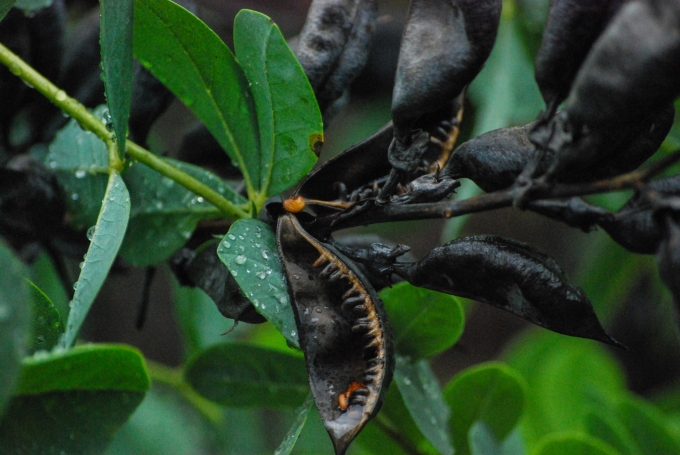Common Name: Blue False Indigo
Family: Fabaceae
Plant Type: Herbaceous Perennial
Native Range: Eastern and Central United States, including parts of the Midwest
Hardiness Zones: 3–9
Height: 3.0 to 4.0 feet
Spread: 3.0 to 4.0 feet
Bloom Time: May to June
Bloom Description: Spikes of deep indigo-blue flowers
Sun Exposure: Full sun to part shade (best in full sun)
Water Needs: Dry to medium
Soil Preference: Well-drained; tolerates poor, clay, or rocky soils
Management Level: Low
Suggested Use: Naturalize, specimen plant, pollinator garden
Attracts: Butterflies, native bees
Tolerates: Drought, erosion, dry soil, shallow-rocky soil, clay soil
Notable Features: Drought-tolerant, showy seed pods, long-lived with deep roots
Nebraska Growing Notes:
False blue indigo is a dependable, long-lived perennial that adds bold structure and color to Nebraska gardens and prairie-style plantings. Though native to the eastern U.S., it performs well across Nebraska in well-drained soils and open, sunny areas. Over time, it forms a shrubby mass of bluish-green trifoliate foliage topped with spikes of lupine-like, indigo-blue flowers in late spring.
It develops a deep taproot and should not be disturbed once established. Seed pods turn charcoal black and rattle when dry, providing ornamental and auditory interest through late summer and fall. These striking pods are often used in dried floral arrangements.
Landscape Use:
Ideal for prairie gardens, naturalized meadows, sunny borders, or as a specimen in pollinator-friendly beds. Offers strong visual presence and seasonal transitions, from vivid blooms in May to dark, architectural seed pods into fall. Its ability to handle poor soils and drought makes it a reliable option for resilient, low-input plantings.
Caution:
May need support in partial shade or overly rich soils where stems can flop. Sensitive to juglone, avoid planting near black walnut trees. Trimming after flowering can help maintain a neater shape but will remove developing seed pods.
Garden Locations:
Bed(s) 4, 5, 10




